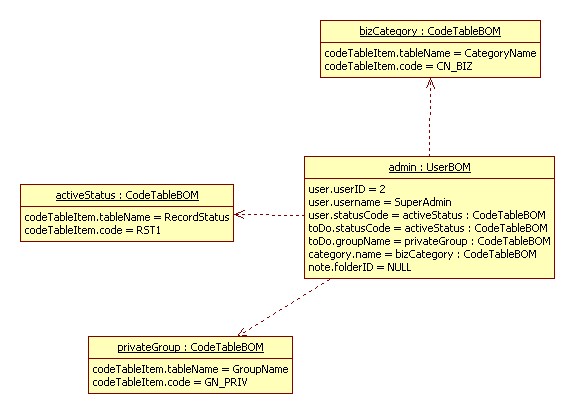Consider a folder Business Object instance, 'SuperAdmin/2', with the following contents.
User(2, 'SuperAdmin', 'SuperAdmin, 'RST1') ToDo(2, 'Approve mails', '2011-11-11', '2011-12-12', null, '45', 'RST1', 'GN_PRIV') UserToDoLink(2, 2, 2) Note(2, 'Send follow up mail', 'Send follow up mail', null, 'RST1') UserNoteLink(2, 2, 2)
In this case, there is a single instance level relationship, with a CodeTable Business Object. Observe that for the Note entity, the value of the attribute folderID is set to NULL. Therefore, in this case, the 'SuperAdmin/1' Business Object is not related to the Folder Business Object.
Attribute Name |
Attribute Value |
Dependent Business Object Type/Identifier |
|---|---|---|
User.statusCode |
RST1 |
CodeTable / RecordStatus |
Category.name |
CN_BIZ |
CodeTable / CategoryName |
ToDo.statusCode |
RST1 |
CodeTable / RecordStatus |
ToDo.groupName |
GN_PRIV |
CodeTable / GroupName |
The equivalent UML representation is shown in the following diagram.
Figure 1. Instance-level relationships for User BOM